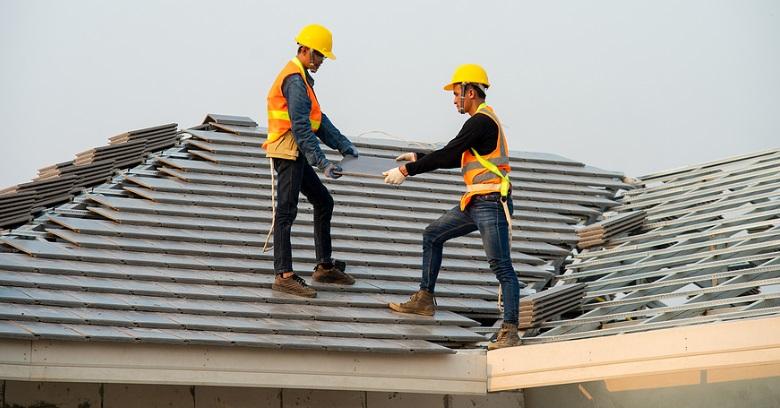
Roofing repair can be dangerous. Although there are some handy homeowners who can take care of small roofing matters on their own, safety should always be a priority. Before getting the ladder out and climbing up on a roof, homeowners should consider their well-being by following the 9 essential safety tips listed below.
- Never Work Alone - Always work with another person on the ground who can help in case of trouble. If something goes wrong, that person can either help the situation or call for assistance.
- Pay Attention to the Weather - The best time to attempt roofing repair is when it is sunny and after any dew or mist has dried up. Avoid climbing in the early morning and do not get work on the roof if rain is in the forecast.
- Wear the Right Footwear - Reduce the chance of slipping and falling by wearing the right shoes. Durable work shoes or boots with rubber soles and tread that grips are essential to prevent roofing accidents.
- Assemble Tools and Supplies In Advance - Reduce the amount of time spent on the roof by assembling all necessary tools and supplies ahead of time. Plan the repair and climb up once to avoid multiple trips up and down the ladder. Use a rope pulley to get supplies up to the roof to prevent falls while climbing.
- Use the Ladder Correctly - Always set up ladders on even ground and secure them with roof anchors or large nails to prevent movement. If the ground is not level, use plywood or some other solid material to level the ladder and secure it in place with ladder stakes if possible.
- Wear A Safety Harness - One of the most important pieces of safety equipment for working at heights is a safety harness. These full body harnesses can prevent or stop a dangerous fall during a roofing repair. Before attempting any DIY roof repairs, it is essential to obtain a safety harness system and secure the harness as indicated by safety instructions.
- Use Toe Holds or Roof Jacks - In addition to using a safety harness and wearing the right shoes, reduce the chance of slipping and falling by installing toe holds or roof jacks. Toe holds can be made by nailing two-by-four lumber to the decking, not the shingles. Roof jacks can also be installed and equipped with a sturdy piece of lumber to provide support.
- Clean Off the Roof - After planning the repair and taking care of all safety precautions, start the project by sweeping off the area being repaired. Debris such as leaves, branches, and loose dirt increase the possibility of slipping and falling. In addition, check for loose nails, fasteners, or other loose hardware that could cause injury when kneeling or otherwise cause a fall.
- Don’t Rush It - Most importantly, it is essential to take it slow and avoid trying to rush things when attempting roofing repairs. Formulate a plan of action, then go through that plan step-by-step. Avoid skipping steps or foregoing safety measures to get repairs done more quickly. Rushing through a repair increases the possibility of missing little details or having a dangerous accident.
While climbing onto the roof is something that should probably be left to the professionals, there may be times when a capable homeowner can make a quick fix or apply a temporary repair. By using the important safety tips listed above, handy homeowners with some roofing experience can protect themselves and reduce the chance of injury. The best recommendation is to call a local roofing repair service who can safely make any required repairs!




